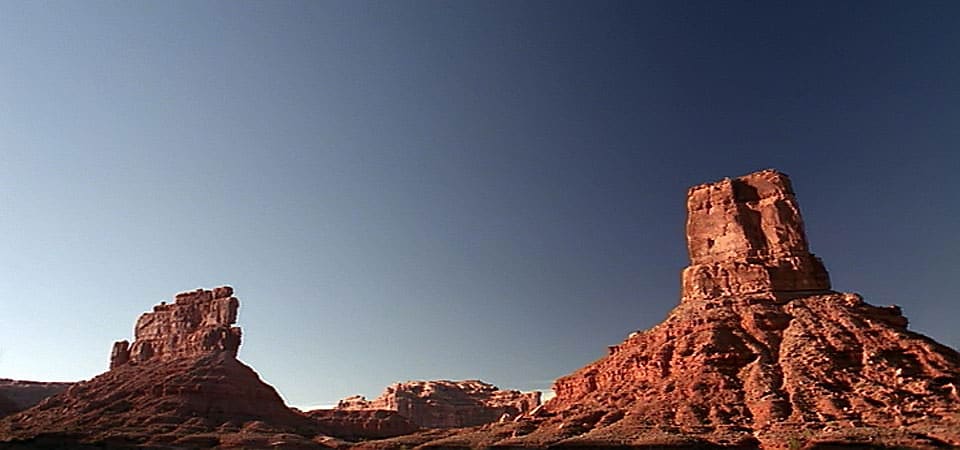
Dutch Light contrasts the arid atmosphere of the Painted Desert in Arizona with the humidity of Holland. We were given a unique opportunity to film in and around Roden Crater, the light observatory that the American artist James Turrell has been constructing since the 1970s. Roden Crater will not be open to the public until 2005.
Turrell was inspired by the Dutch-Belgian astronomer Marcel Minnaert, author of the successful Nature of Light and Colour in the Open Air, the second volume of which is about colour and light in the Dutch countryside. Roden Crater is an extraordinary work of art, with the light of the universe as both its medium and its subject. Turrell’s aim is to create the illusion of drawing light closer to the observer and making the act of observing a conscious experience.
From a reclining position inside the crater, the observer perceives the blue sky as a finite dome of tangible light. As night falls and the stars appear, you can virtually feel the world turning. In the very depths of the crater, Turrell has constructed the ultimate vantage point for the observation of a solar eclipse. He says the light in the Painted Desert is different from that in Holland. It’s hard and even, whereas the light in Holland looks far closer because of the moisture in the air. He describes it as an ‘almost loving light’.
We continued our journey to Monument Valley to talk to Alex Beguen, a Navajo guide, who explained the significance of light in his culture. He says that on a clear day visibility in the desert can be anything up to 200 kilometres. In Holland it’s never more than 70 kilometres.
